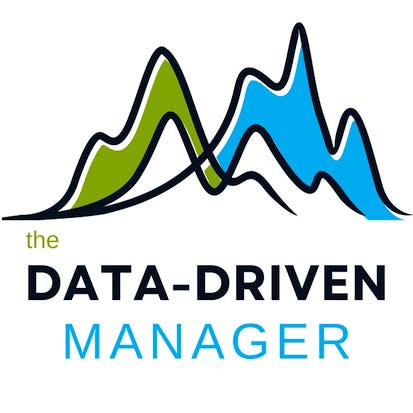- Level Professional
- Duration 9 hours
- Course by University of Colorado Boulder
-
Offered by

About
Engineering and Business professionals often have access to many sources of data. The best way to way to ensure your data is both valid and reliable is to plan for it ahead of time. Through this class, you will be able to plan for accurate and precise data generation, then use that data for the purpose of estimation and risk reduction related to capital investments. This specialization can be taken for academic credit as part of CU Boulder’s Master of Engineering in Engineering Management (ME-EM) degree offered on the Coursera platform. The ME-EM is designed to help engineers, scientists, and technical professionals move into leadership and management roles in the engineering and technical sectors. With performance-based admissions and no application process, the ME-EM is ideal for individuals with a broad range of undergraduate education and/or professional experience. Learn more about the ME-EM program at https://www.coursera.org/degrees/me-engineering-management-boulder.Modules
Introduction to Acquisition, Risk and Estimation
1
Discussions
- Introduce Yourself!
1
Videos
- Welcome to Acquisition, Risk and Estimation
1
Readings
- Welcome and Where to Find Help
Introduction to Fundamentals of Sampling
1
Videos
- Introduction to Fundamentals of Sampling
Sampling
4
Videos
- Sample Versus Population
- Types of Sampling - Part 1
- Types of Sampling - Part 2
- Sampling Error
Random Sampling Distributions
2
Videos
- Random Sampling Distributions - Part 1
- Random Sampling Distributions - Part 2
Random Sampling Distribution of the Mean
4
Videos
- RSD of the Mean
- The Central Limit Theorem
- Solving Problems with the RSD of the Mean Part 1
- Solving Problems with the RSD of the Mean Part 2
Discussion: Fundamentals of Sampling
1
Discussions
- Fundamentals of Sampling
Assessment: Fundamentals of Sampling
1
Quiz
- Fundamentals of Sampling
Introduction to Estimation
1
Videos
- Introduction to Estimation
Estimates and Estimators
2
Videos
- Estimators and Point Estimates
- Interval Estimates
Confidence Intervals
4
Videos
- Confidence Interval for the Mean, Sigma Known
- Confidence Interval for the Mean, Sigma Unknown
- Confidence Interval for Variance / Standard Deviation
- Confidence Interval for Proportion / Rate (Count)
Estimation Practice Activities
2
Videos
- Practice Activity 1
- Practice Activities 2 and 3
Discussion: Estimation
1
Discussions
- Estimation
Assessment: Estimation
1
Quiz
- Estimation
Introduction to Best Case / Worst Case Analysis
1
Videos
- Introduction to Best Case / Worst Case Analysis
Best Case / Worst Case Analysis
5
Videos
- Best / Worst Case Analysis Introduction and Step 1
- Best / Worst Case Analysis Steps 2 and 3
- Best / Worst Case Analysis Steps 4 and 5
- Creating the table using RStudio
- Visualization and Joint Probability
Best / Worst Case Analysis Practice Activities
3
Videos
- Best / Worst Case Example 1
- Best / Worst Case Example 2 Part 1
- Best / Worst Case Example 2 Part 2
1
Quiz
- Best / Worst Case Practice Quiz
Discussion: Best Case / Worst Case Analysis
1
Discussions
- Best Case / Worst Case Analysis
Assessment: Best Case / Worst Case Analysis
1
Quiz
- Best Case / Worst Case Analysis
Introduction to Foundations of Hypothesis Testing
1
Videos
- Introduction to Foundations of Hypothesis Testing
Hypothesis Testing
4
Videos
- Introduction to Hypothesis Testing
- Testing Hypotheses
- Significance Level, Risk, One-Two-Tailed Tests
- Error and Power in Hypothesis Testing
Beta and Power Calculations
4
Videos
- Understanding Beta and Power
- Calculating Beta and Power for Means
- Calculating Beta and Power for Variance
- Calculating Beta and Power for Proportions and Rates
Sample Size Calculations
3
Videos
- Sample Size Calculations for Means
- Sample Size Calculations for Variances
- Sample Size Calculations for Proportions
Discussion: Foundations of Hypothesis Testing
1
Discussions
- Foundations of Hypothesis Testing
Assessment: Foundations of Hypothesis Testing
1
Quiz
- Foundations of Hypothesis Testing
Introduction to Essentials for Effect Size Calculations
1
Videos
- Introduction to Essentials for Effect Size Calculations
Introduction to Effect Size Calculations
5
Videos
- Essentials for Effect Size Calculations
- Risk Analysis - Implications of Decisions
- Effect Size Calculation OSCD Example Part 1
- Effect Size Calculation OSCD Example Part 2
- Effect Size Calculation OSCD Example Part 3
Molex Effect Size Problem
5
Videos
- Effect Size Calculation for the Mean Part 1
- Effect Size Calculation for the Mean Part 2
- Effect Size Calculation for the Mean Part 3
- Effect Size Calculation for the Standard Deviation
- Effect Size Calculation for the Proportion
Practice Problem
1
Quiz
- Effect Size Practice Quiz
Discussion: Essentials for Effect Size Calculations
1
Discussions
- Essentials for Effect Size Calculations
Assessment: Essentials for Effect Size Calculations
1
Quiz
- Essentials for Effect Size Calculations
Auto Summary
"Data Acquisition, Risk, and Estimation" focuses on planning for precise data generation to enhance estimation and risk management in capital investments. Ideal for engineering and business professionals, it offers valuable insights into data reliability. Available through Coursera, this course can be credited towards CU Boulder’s ME-EM degree, designed to transition technical professionals into leadership roles. With a duration of 540 minutes, the course is accessible via Starter and Professional subscriptions.

Wendy Martin


